In May, I wrote about how deeply polarized Wisconsin voters were over Donald Trump’s presidency. This basic fact hasn’t changed. In our latest poll, we asked about Trump’s handling of the economy, the pandemic, the recent civil rights protests, and his job overall. For each question, respondents could choose whether they strongly or only somewhat approved or disapproved. Thirteen percent gave Trump the highest score possible, strongly approving in all four questions. Thirty-two percent gave the worst score available, strongly disapproving of Trump’s handling of each issue. Just 2 percent gave a completely neutral response.
Yet focusing solely on the strong divisions in Wisconsin’s electorate can disguise the fact that Donald Trump’s approval rating does vary in real ways–both between different issues and over time. It appears about 45 percent of Wisconsin electors have a frozen position on Donald Trump–either entirely negative or completely positive. The remaining majority assess Trump’s performance differently depending on the issue.
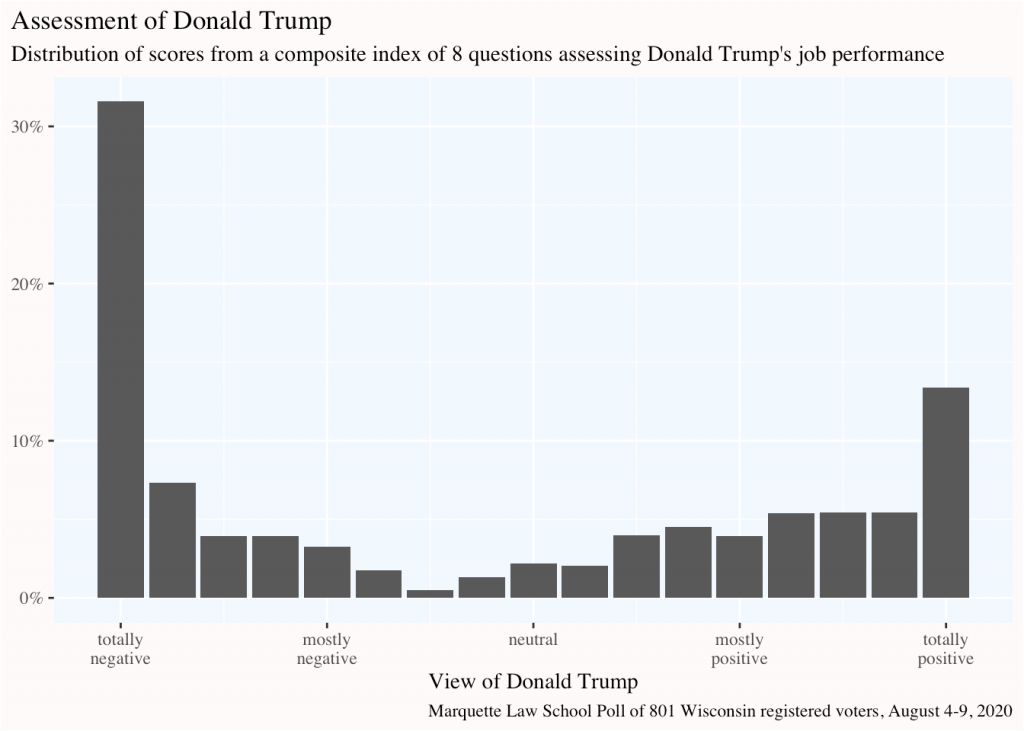
Opinion differs by issue
The following graphs show Donald Trump’s ratings for each question broken out by party identification. In all cases I classify independents who lean to a political party as independents.
Trump’s best issue is the economy. Seventy-one percent of Republicans strongly approve of his job handling the economy, and conversely only 74 percent of Democrats strongly disapprove. Trump is rated worse by members of both parties on other aspects of his job. Fifty percent of Republicans strongly approve of the way he is handling the coronavirus pandemic; 92 percent of Democrats strongly disapprove. On Trump’s worst issue–handling of the protests following George Floyd’s death–44 percent of Republicans strongly approve, and 87 percent of Democrats strongly disapprove.
When a Democrat or Republican declines to “strongly” approve/disapprove of Trump, they usually slide into the next category of “somewhat” approving or disapproving of the president. There is a small but non-trivial group of Republicans who sometimes disapprove of Trump. Combining “somewhat” and “strongly” disapprove, 7 percent of Republicans dislike Trump’s handling of the economy, 11 percent his overall job performance, 16 percent his handling of the coronavirus, and 20 percent his handling of the protests. In these polarized times, it is a rare issue that can make one-fifth of a president’s co-partisans disapprove of him.
On the other side of the equation, 4 percent of Democrats either “somewhat” or “strongly” approve of Trump’s overall job performance. Nine percent approve of his handling of the economy, 4 percent approve of his handling of the coronavirus, and just 2 percent approve of his handling of the protests.
(click image to view a larger version)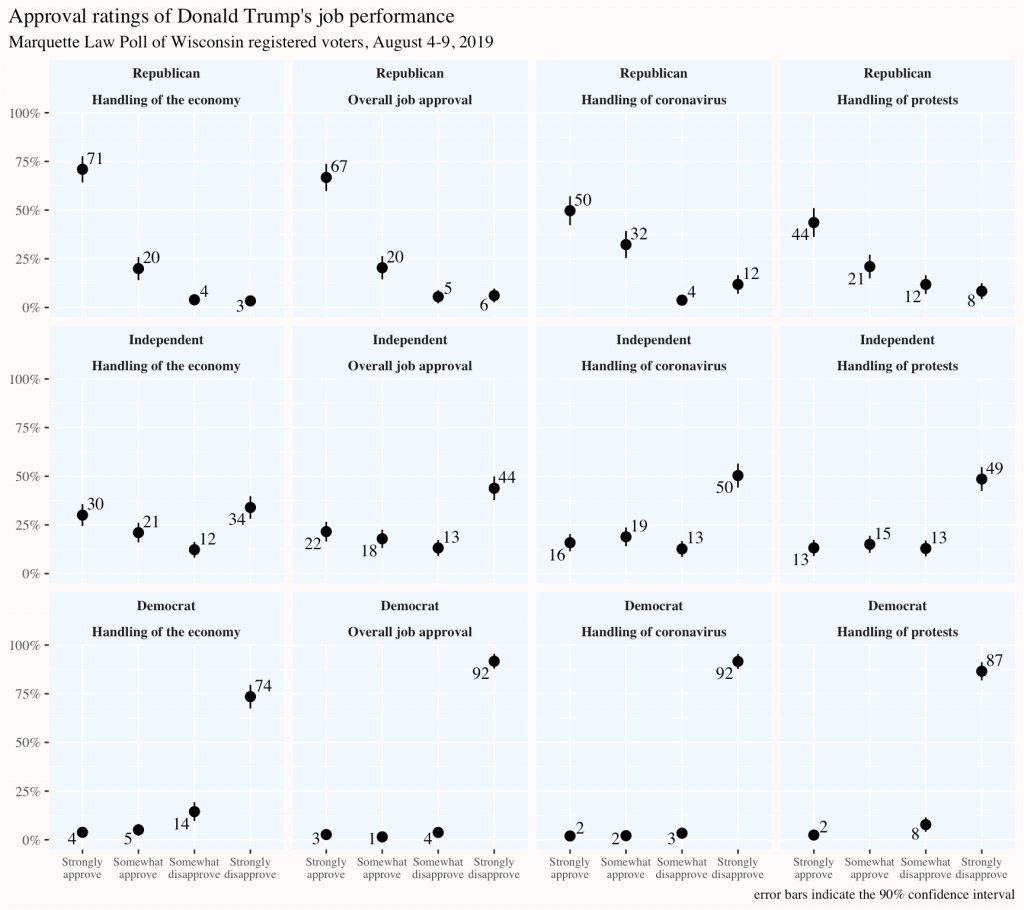
Opinion differs over time
Over the course of 2020, Trump’s overall approval rating has worsened a little. Since January, “strongly disapprove” has increased from 40 percent to 46 percent, while “strongly” and “somewhat” approve have each declined by 2 points.
Several trends have contributed to this modest shift. Democratic opposition to the president has hardened. In January, 81 percent of Democrats strongly disapproved; 92 percent do in August. Most Democrats have ceased to hold middling views of Trump–either somewhat approving or disapproving. In January 16 percent of Democrats held one of these positions; now 5 percent do.
Among Republicans, strong approval peaked at 77 percent in February (around the time the impeachment process failed). Now, strong approval stands at 67 percent.
As usual, the views of Independents have been the most volatile. Trump benefited from a boost in popularity at the beginning of the shutdown, consistent with a small “rally ’round the flag” effect. In late March, his ratings among Independents reached 32 percent strongly approving, 20 percent somewhat approving, 9 percent somewhat disapproving, and 35 percent strongly disapproving. As the pandemic progressed, these numbers worsened. Now, in early August, 22 percent strongly approve of Trump, 18 percent somewhat approve, 13 percent somewhat disapprove, and 44 percent strongly disapprove.
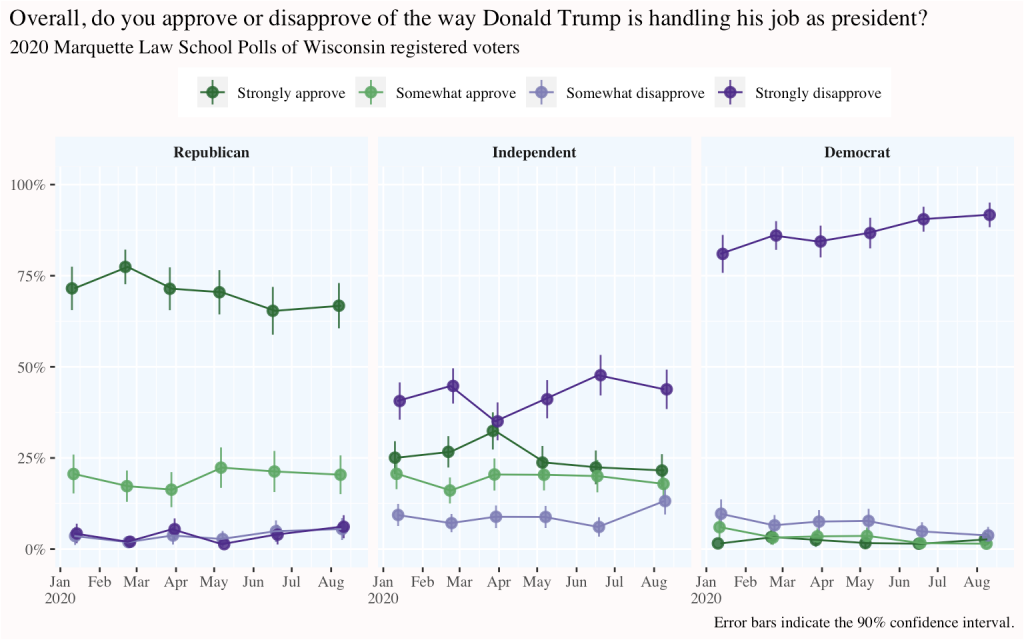
The economy has consistently been Trump’s strongest issue in Marquette’s polling. This is still true, but it has slipped a bit during the pandemic. Seventy-one percent of Republicans strongly approve, down from 79 percent in January. Seventy-four percent of Democrats strongly disapprove, up from 58 percent in January. Independents have always been closely divided on this issue, but, for the first time in 2020, the share strongly disapproving now exceeds those strongly approving; although, this result is within the margin of error.
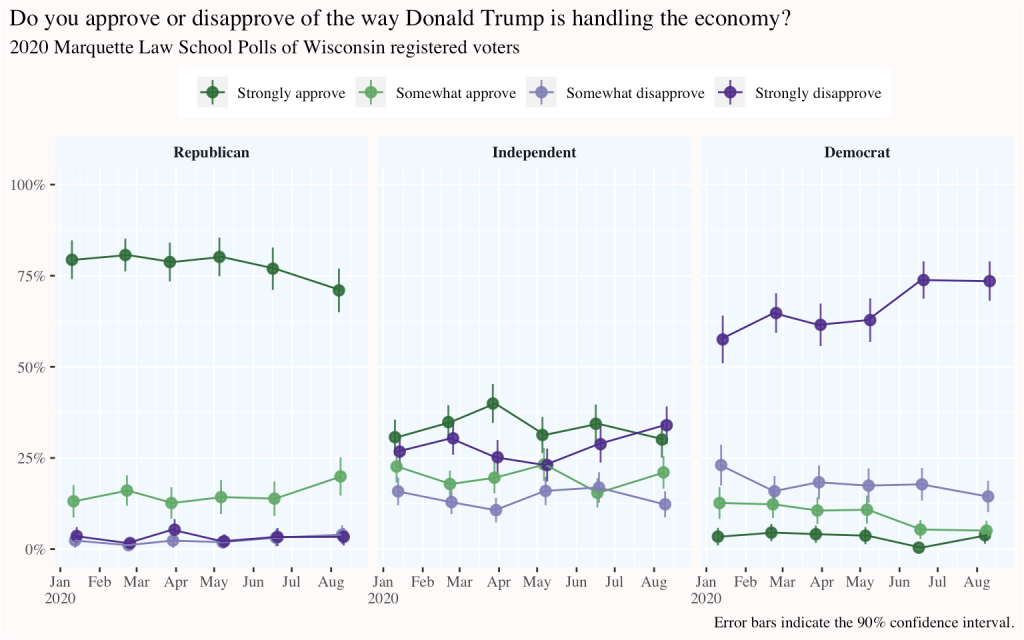
The COVID-19 pandemic has changed from a relatively decent issue for Donald Trump to a remarkably bad one. In late March, 68 percent of Republicans strongly approved of the job Trump was doing to handle the outbreak, and 73 percent of Democrats strongly disapproved. Independents were evenly divided with 31 percent strongly approving and 30 percent strongly disapproving.
Now, in early August, the share of Republicans strongly approving has declined to 50 percent, the proportion of Democrats strongly disapproving has risen to 92 percent, and Independents have decisively shifted away from the president. Fifty percent strongly disapprove of Trump’s handling of the outbreak, and 16 percent strongly approve.
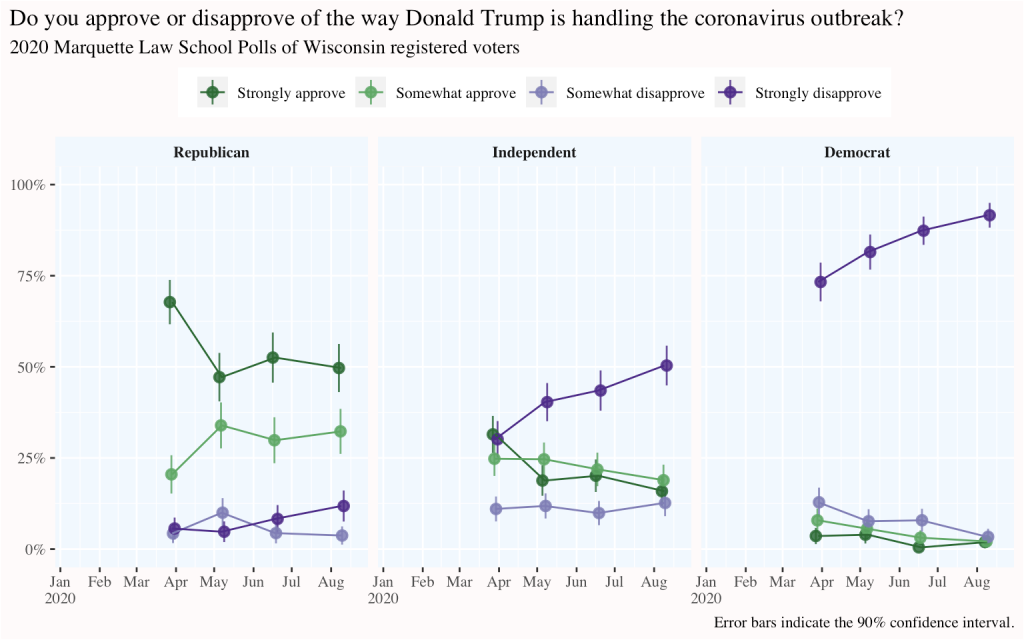
I do not include a trendline for approval of Donald Trump’s handling of the protests about the death of George Floyd because we have only polled twice since June, and none of the changes in opinion by party exceed the margin of error.
Electoral implications
People with less strong opinions about Donald Trump also say they are less likely to vote. It’s impossible to separate the causality. No doubt some people are less likely to vote because they dislike both candidates, but other people probably have less strong opinions about the candidates because they rarely participate politically anyway.
Likelihood of voting is significantly dependent on the strength of one’s feelings toward Donald Trump. Ninety-two percent of registered voters who totally approve or disapprove of Trump say they are certain to vote, compared with 81 percent of those who mostly approve or disapprove, and 71 percent of those with more middling or neutral views.
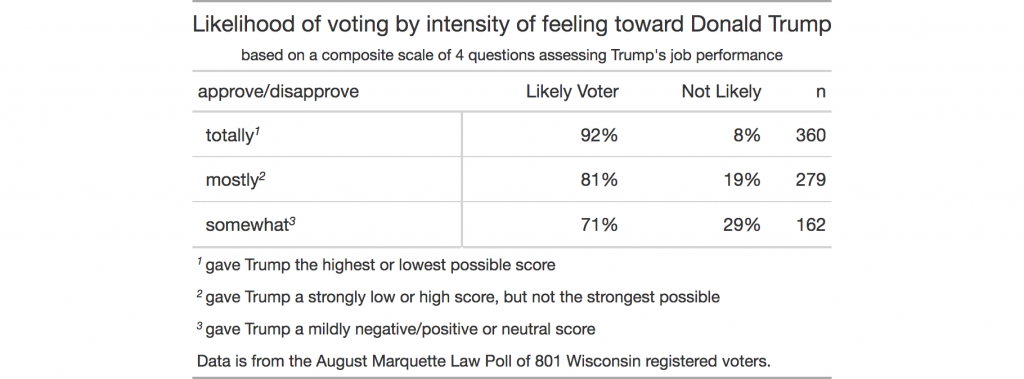
Compared to the beginning of the year, our polling finds Joe Biden a bit better off in his matchup with Donald Trump. Among all registered voters, we recorded a Biden lead of 4 points in January and a tie in February. In June, we found a Biden lead of 8 points, and in August that lead was 6 points.
This is not an enormous change. Despite Trump’s deteriorating approval ratings, Biden does not appear to be running away with the election in Wisconsin. Skepticism of Donald Trump does not automatically translate into support for Joe Biden.
As expected, Trump receives 99 percent of the vote among the most enthusiastic Trump approvers. Conversely, Biden gets 92 percent of the vote among the most inveterate Trump disapprovers. Those mostly positive toward Trump give him 96 percent of the vote. Those mostly negative give Biden 82 percent. Even among the softest Trump supporters, those only somewhat more positive than negative, Trump gets 80 percent of the vote and Biden only 2 percent.
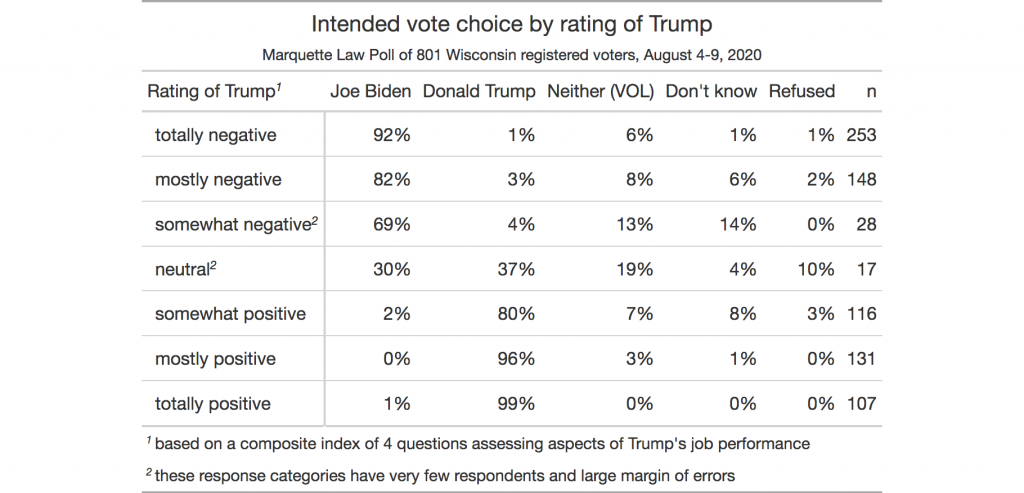
A significant share of Wisconsin voters dissatisfied with Trump either haven’t made up their mind or plan to vote for a third party in November. Three of Wisconsin’s last five presidential elections have been decided by less than one percentage point. If the 2020 election follows that pattern, the decisions of voters who don’t like Trump but aren’t sold on Biden either may be the deciding factor.
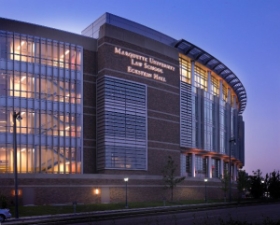 backpack dwarfing my elementary school frame I lean against a tree at the bus stop. Flanked by my too-young for school sister who smiles from ear to ear my mom snapped the photo. I think that photo was both for me and my mom. I got a visual reminder that my family was always going to be there for me; my mom got a picture she could use to embarrass me with, and a memento of her favorite and only son.
backpack dwarfing my elementary school frame I lean against a tree at the bus stop. Flanked by my too-young for school sister who smiles from ear to ear my mom snapped the photo. I think that photo was both for me and my mom. I got a visual reminder that my family was always going to be there for me; my mom got a picture she could use to embarrass me with, and a memento of her favorite and only son.
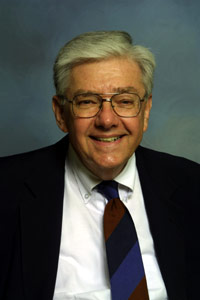 Many of us on the Marquette Law School faculty were saddened to learn of the death earlier this month of Professor Julian Kossow. Julian had a long and varied career, primarily in academia and real estate. As he recounted in
Many of us on the Marquette Law School faculty were saddened to learn of the death earlier this month of Professor Julian Kossow. Julian had a long and varied career, primarily in academia and real estate. As he recounted in 





